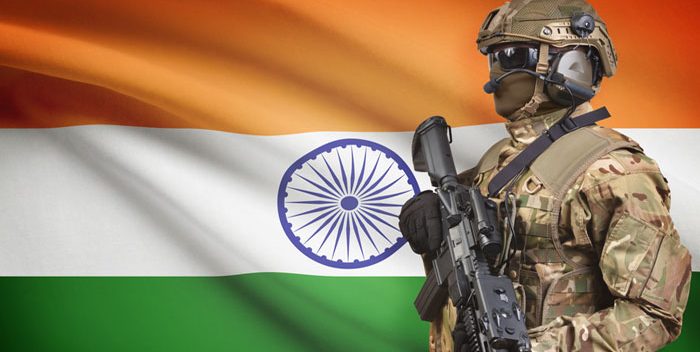
Current State of the Indian Defence Ecosystem
India’s Defence Sector has undergone large scale changes in the past decade. A renewed thrust on indigenisation, licensed production, import substitution and export promotion has been initiated by the government, and has reflected in the private sphere.
“Today, there is more transparency, trust, and technology-driven approach in the defence sector of the country than ever before. For the first time after Independence, so many major reforms are happening in our defence sector. Instead of stagnant policies, a single-window system has been put in place.” – Shri. Narendra Modi, Hon’ble Prime Minister Of India
India is in the list of top five countries that has the count of military personnel over 2.5 million. Being the World’s Second-largest Military Force with the World’s Largest Volunteer army, there are numerous, recurring needs faced by our forces. The various services within the Indian Armed Forces also present diverse requirements. There are three professional services: The Indian Army, Indian Navy, and Indian Air Force. These services also have separate special forces units such as: PARA SF of the Indian Army, the MARCOS of the Indian Navy and the GARUD Commando Force of the Indian Air Force. Beyond this, there are various counter terrorism / counter insurgency units and Central Armed Police Forces guarding national security interests.
India’s Defence Budget has been growing at a steady rate. Budget outlay of FY 2022-23 has been set at Rs 525,166.15 Cr meanwhile, last year’s Defence budget FY 2021-22 was Rs 478,196 cr. The allocation has been up 10 per cent from the previous year. In order to give a push to indigenous Domestic Enterprises under the ‘Aatmanirbhar Bharat’, the share of domestic capital procurement, which was earmarked at 64% in 2021-22, has been enhanced to 68% of the Capital Acquisition Budget of the Defence Services (Rs 1.24 lakh crore) for the FY 2022-23, which would be Rs 84,598 crore. 25% of the Defence R&D budget has been set aside for private entities and startups. The country plans to spend USD 130 billion on military modernization in the next five years and is also achieving self-reliance in defence production.
These are some salient features of the Defence Acquisition Procedure 2020 promoting ‘Aatmanirbhar Bharat’ and ‘Make in India’:
- Notification of positive indigenisation lists in respect of weapons/platforms to ensure that equipment as mentioned in the list is not procured ex-import post prescribed timelines.
- Highest priority to procurement under Buy (Indian-Indigenous Design, Development & Manufacture [IDDM]) category.
- Indigenisation of imported spares through Make-III process introduced with the aim of enhancing self-reliance through import substitution.
- Reservation for MSMEs and small shipyards for orders up to Rs 100 crore/year.
- Increased Indigenous Content (IC) in various categories of procurement under DAP-2020.
- Reservation for Indian Vendors with ownership and control by resident Indians in procurement under the categories viz. Buy (Indian-IDDM) [Chapter-2], Make-I & Make-II [Chapter-3] and Strategic Partnership (SP) Model [Chapter-7] of DAP-2020.
- Introduction of new category of Buy (Global-Manufacture in India) to give push to ‘Make in India’ initiative of the Government.
On 22nd March 2022, the Defence Acquisition Council (DAC) has approved the following amendments in DAP-2020:
- It has been decided that any import of defence equipment / sourcing from Foreign industry, irrespective of value and type of acquisition should only be an exception requiring specific approval of DAC/Raksha Mantri.
- To reduce financial burden on the Indian Industry, Integrity Pact Bank Guarantee (IPBG) has been dispensed with. Earnest Money Deposit (EMD) has been introduced as a bid security and Pre-Contract Integrity Pact (PCIP) cover till conclusion of contract. Post conclusion of contract, Performance cum Warranty Bank Guarantee (PWBG) to provide the PCIP cover. For projects upto Rs. 100 crore and for MSMEs & start-ups, EMD requirement has been waived.
- Procedure for acquisition through iDEX and Make-II has been simplified with compression of timelines.
